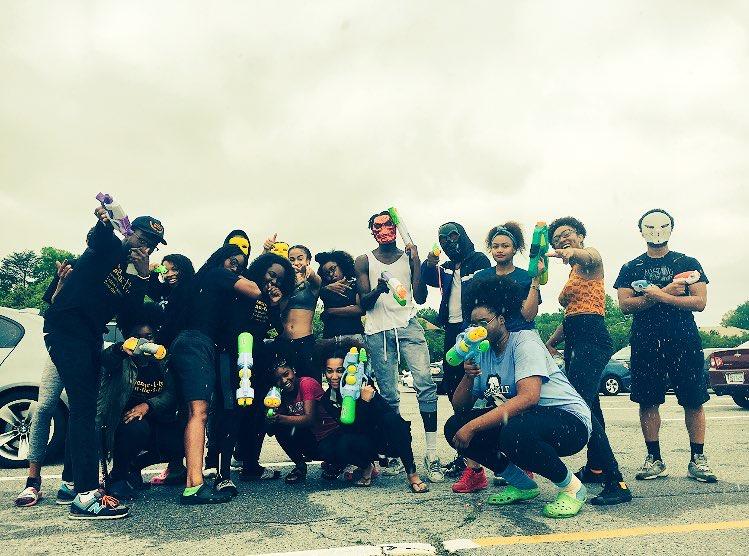Seniors Purge the School: Was their Prank Too Extreme?
Photo courtesy of Victor Okafor
Seniors pose before the purge on the school.
May 25, 2016
Chaos, disruption, and mayhem erupted into the air when Roosevelt seniors began their prank. Loading their water guns and balloons with whatever they could find — vinegar, juice, allegedly even urine — they began attacking students, teachers, and even property. Eggs were thrown at cars, stink bombs were dropped throughout the school, and fights had erupted in the school parking lot.
“It really started to get out of hand,” said junior Cyrus Belsoi.
The annual senior prank is a tradition where the seniors have one last bit of adolescent fun before going their separate ways into the world. It allows the seniors to say their final goodbyes to high school, while also leaving a legacy behind. But some students and staff members said that senior students used the prank as an excuse for vandalism and assault.
“There were students that were traumatized by it, there were teachers that were targeted,” said Ms. Michelle McGee.
Ms. McGee continued, recounting how she saw a student physically harmed by the prank. “I saw a student who had to be led from a temporary into the building by Mr. McNeill to have her eyes flushed. She got hit in the face with a balloon filled with vinegar and water.” Principal Reginald McNeill confirmed this, reassuring that the student was fine, and the situation was taken care of.
Mr. McNeill explained that the prank was not approved by administration, and that it was “unacceptable.” He continued that administration “told kids not to bring water guns but kids brought water guns” so they tried to move those students out to the parking lot. He also commented that these were the actions of “a few students that are just mean spirited and thought this was funny, and it’s not funny.”
Although some said this was amusing, these type of pranks made the jobs of the custodial staff even more difficult than they already are. An even more pressing issue is the example it sets for the underclassmen. By being exposed to these type of pranks, the underclassmen start to believe that this rowdy behavior is acceptable.
“Yeah, the purge was not approved by anyone,” stated senior Nancy Nguyen, one of the class officers for the class of 2016. “I don’t know who started the idea, but the seniors started telling their friends, and as everyone saw, the word got around to a lot of people.” She explained that the planned prank was going to include decorations on the landing and balloons in Mr. McNeill’s office.
Some seniors who participated in the prank even agreed that the prank was a bit too extreme. “The prank shouldn’t be this extreme,” said senior Victor Okafor. “But it should be fun and amazing enough to remember all of it.”
Although most students can agree that the senior pranks shouldn’t get too extreme, others disagree.
“It was lit,” said sophomore Elijah Virachittevin. “I think each senior prank should try and top the previous year’s senior prank.”
Many suggest that there needs to be some middle ground between having a fun senior prank and not causing considerable harm to others and their property.
Ms. McGee suggests that students be more creative. “Think random, think funny, think of things that will at least amuse your classmates without hurting people.”
“I think they should do something that’s fun to look at,” states junior Jazmyne Mitchell, “But wouldn’t be damaging to any property or anything.”
Although the majority of our graduating classes have kept their prank to an appropriate level of disruptiveness, some students proved to be an exception. The graduated class of 2011, for example, had a prank that caused a similar amount of destruction as 2016’s prank. According to Ms. McGee, the students glow-painted every classroom with the phrase “Class of 2011.” Along with that, the students destroyed many of the science labs, spray painted the temps, and threw the furniture of classrooms into disorder.




